In February 1967, a group of Indiana businessmen, including insurance executive John DeVoe, attorney Dick Tinkham, L. Charles DeVoe, Ron Woodward, Lafayette banker E. J. Bannon, George Lyn Treece, sports agent Chuck Barnes, and sports editor met at the Lafayette Country Club and agreed to pool $6,000 to purchase a franchise in the proposed American Basketball Association (ABA). With George Mikan as commissioner, the ABA embarked on its inaugural season with National Basketball Association (NBA) castoffs, players banned from the NBA, and unknown youngsters looking for a break.
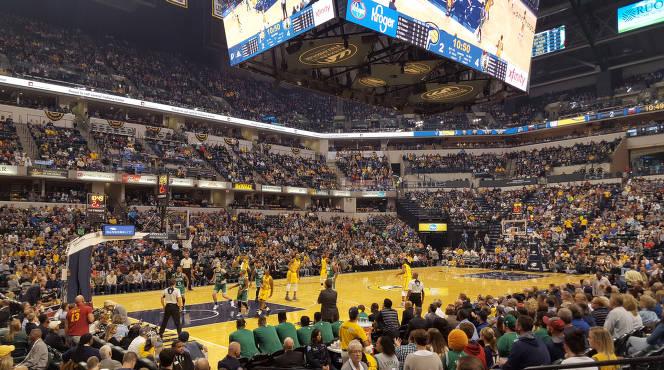
League gyms were cramped and occasionally leaked. While the ABA did employ a number of future NBA luminaries, the association struggled financially and organizationally. A distinctive red, white, and blue basketball and a radical innovation—the three-point shot—were two of very few league constants. So was the dominance of Indianapolis’ entry in the league, the Pacers.
On June 16, 1967, the franchise announced it would be known as the “Pacers” because the organization intended to set the “pace” in professional basketball. Mike Storen was named as its first general manager and Larry Staverman, an assistant coach at Notre Dame, was chosen as the first head coach.
Rejected by established Hoosier stars like Oscar Robertson and the Van Arsdale twins, the Pacers signed as their first player. Brown was peripherally linked to a college point-shaving scandal in 1961 and banned from the NBA. Freddie Lewis and Bob Netolicky were obtained in early drafts, and 1967 ABA Rookie of the Year was received in a trade with the floundering Minnesota Muskies.
During the first several seasons, the team also signed an assortment of Hoosier basketball players, including Jimmy Rayl, Ron Bonham, Rick Mount, Bill Keller, and 1969 Indiana high school Mr. Basketball George McGinnis, who joined the Pacers after his sophomore season at Indiana University.
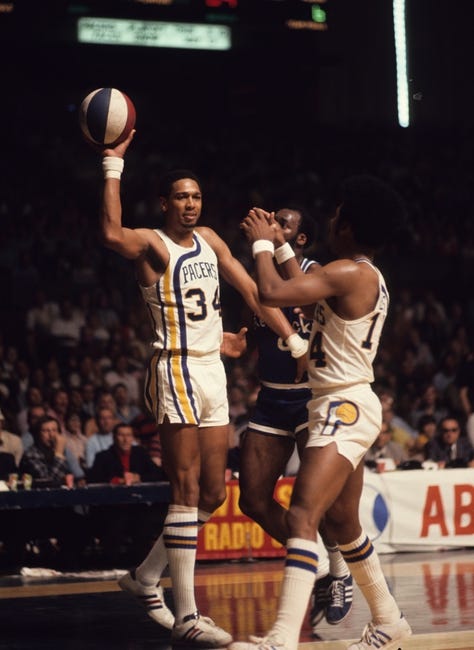
Over the course of the league’s nine tumultuous seasons, the became the ABA’s showcase franchise. Under the stewardship of coach (who replaced Staverman just nine games into the 1968-1969 season), the club won three league titles (1970, 1972, and 1973), produced three MVPs (Mel Daniels, 1969 and 1971, and George McGinnis, 1975), hosted the first and third ABA All-Star Games, and habitually led the league in attendance. While most ABA teams attracted fewer than 5,000 fans per game, the Pacers averaged over 8,000 at the Coliseum. Brown (2013), Daniels (2012), McGinnis (2017), and Leonard (2014) would all be inducted into the Naismith Memorial Basketball Hall of Fame.
When the administration of Mayor constructed a 17,000-seat downtown arena as a centerpiece of urban renewal, the foundation for true major league basketball was laid. The Pacers moved to in 1974 and drew an ABA record 8,604 spectators per game.
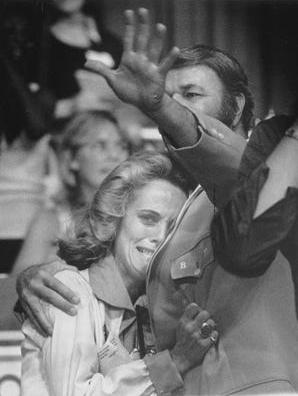
The chronic instability of the ABA led to the league’s demise following the 1975-1976 season. Indiana, Denver, San Antonio, and the New York Nets were admitted to the NBA for a fee of $3.2 million per franchise. The ABA expatriates were also required to pool $3 million to pay off investors in other ABA franchises, were denied television money in 1976-1977, and agreed to forego first-round draft choices in the 1977 college draft.
The resultant financial difficulties nearly destroyed the Pacers. Unable to meet increasing salary demands, the team lost several top players, including McGinnis, to free agency. A telethon in 1977 helped to keep the club afloat and, after a series of ownership changes, the franchise was sold to California businessman Sam Nassi in 1979.
A legacy of injuries, poor drafts, bad trades, and constant threats to move the franchise followed. In 1982-1983, a 20-62 team attracted 4,814 fans per game, last in the NBA and lowest in franchise ABA-NBA history. The Pacers’ long-term prospects appeared to improve in 1983 when Indianapolis shopping mall magnates and Herbert Simon purchased the club, saving professional basketball in Indiana. While the team employed several head coaches soon after (including 1981 NBA Coach of the Year Jack McKinney and Hall of Famer Jack Ramsay), the consistent support of local ownership lent a semblance of stability to the organization.
The team won its first NBA playoff game in 1987 and by 1993 the club had reached the league playoffs in four consecutive seasons. In 1994, under new coach Larry Brown, the Pacers reached the Eastern Conference Finals. This was the first time the team had moved beyond the initial round of the playoffs, an achievement that heightened the enthusiasm of area residents.
After Larry Brown brought NBA playoff success to the Pacers franchise, team president Donnie Walsh made an uncommon move and replaced Brown following the 1996-1997 season with homegrown, Indiana basketball legend, and Naismith Basketball Hall of Famer Larry Bird. Bird, with no coaching experience, was a popular choice among fans and eventually led the Pacers to their first NBA Finals appearance (losing to the Lakers) in 1999-2000 and was named Coach of the Year. Bird remains the only person in NBA history to be named Player of the Year, Coach of the Year, and Executive of the Year. Bird is the Pacers’ all-time winningest coach by percentage (.687).
Walsh also made one of the most important player personnel moves in franchise history when in 1987 he drafted Reggie Miller out of UCLA. Miller would go on to become the All-Star face of the franchise during a Hall of Fame career.
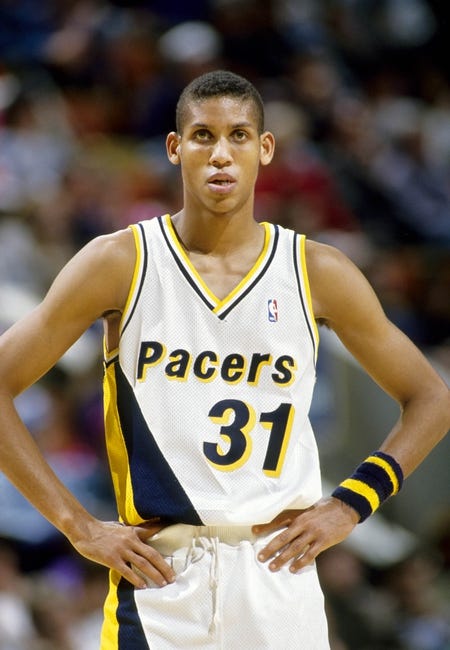
The season of 1999-2000 not only produced the first Pacers NBA Finals appearance but it marked the franchise’s first season in a new venue, which was opened on November 6, 1999, when the Pacers played the Boston Celtics. Opened with 750,000 square feet and 17,923 seats for basketball, the structure was designed to capture the tradition and history of Indiana basketball.
The naming rights to the venue were sold to Conseco, a financial services organization. In 2010, the company renamed itself CNO Financial Group, but the Conseco name was retained by the Fieldhouse. In December 2011, CNO Financial Group changed the name of the Conseco Fieldhouse to , after one of its subsidiaries, Bankers Life and Casualty.
In 2020, the fieldhouse underwent many changes as part of a “Fieldhouse of the Future” project approved by the Marion County to upgrade and enhance all areas of the facility. As part of the renovation agreement, the Pacers committed to remaining in Indianapolis for at least 25 more seasons.
After Larry Bird’s successful three-year run as coach, the Pacers moved on to another Hoosier legend, former IU great Isiah Thomas. Thomas lasted three seasons as head coach (three consecutive first-round playoff exits) before Bird returned to the Pacers as president of basketball and hired Rick Carlisle, formerly an assistant with Bird with the Pacers, to be head coach. Carlisle was successful right away, leading the Pacers to the Eastern Conference Finals his first season (2003-2004).
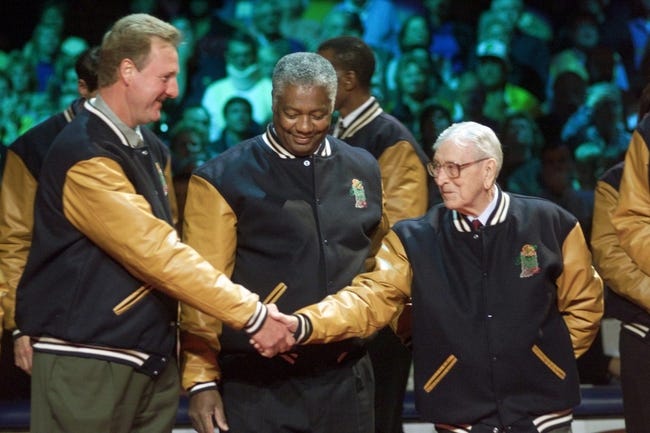
After missing the playoffs in 2006-2007, the Pacers replaced Carlisle with NBA veteran coach Jim O’Brien. After three seasons of no post-season play, the Pacers replaced O’Brien midway through 2010-2011 with assistant coach Frank Vogel. Vogel would go on that season to turn the team around and lead Indiana into the playoffs. In his first full season (2011-2012), Vogel and the Pacers would reach the Eastern Conference Semifinals. The Pacers then had two consecutive seasons of Eastern Conference Finals appearances, losing both times (2013, 2014) to Lebron James and the Miami Heat.
Vogel was let go in 2016 and Nate McMillan was hired as head coach. McMillan reached the playoffs with the Pacers each of his four seasons with Indiana but the team did not win a playoff series. McMillan was fired following the 2019-2020 season, and in October 2020, Toronto Raptors Assistant Nate Bjorkgren became the Pacers head coach. He lasted one season. In June 2021, the Pacers announced that Rick Carlisle was returning to Indianapolis for his second stint as Pacer head coach, and in September 2021, Pacers Sports & Entertainment announced a partnership with Gainbridge, an Indianapolis-based online financial services platform, that gave the company naming rights for the Pacers’ home arena.
Herb Simon and his son, Stephen, lead Pacers Sports & Entertainment, the Pacers, the WNBA , NBA 2K League Pacers Gaming, and the Fort Wayne Mad Ants of the G-League. The Pacer’s Foundation is active in providing scholarships and activities for community youth.

Help improve this entry
Contribute information, offer corrections, suggest images.
You can also recommend new entries related to this topic.